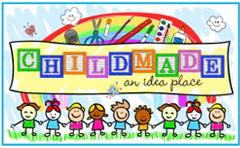
Some of my children have easily learned their addition and multiplication facts, the traditional way, through manipulatives and memorization. But others hit the memorization wall, and crumpled.
 When I first encountered this obstacle with addition I purchased, and was thrilled with, Judy Liautaud's Addition The Fun Way, a Picture Method of Learning the Addition Facts.
When I first encountered this obstacle with addition I purchased, and was thrilled with, Judy Liautaud's Addition The Fun Way, a Picture Method of Learning the Addition Facts.
Through a series of amusing stories and comical illustrations, children learn each fact, almost without effort. Once the facts are learned you can proceed, as normal, with worksheets and speed drills, if that's your desire.
So, when we hit a similar wall with multiplication facts, I happily purchased Liataud's Times Tables the Fun Way. But, while Dave Rodriguez's illustrations are pretty much identical to Val Chadwick Bagley's from the addition book, the basic method of the stories has changed.
 In the addition book, Liautaud assigns one character to each number - so 3 Bee, 4 Door, 5 Who Can Drive, Sick 6, and so on. The characters stay the same in every story. 3 + 6 is a story about Sick 6, and 3 Bee, and the answer has to do with a 9 Sign (I won't give it all away, since I don't have the author's permission), while 6 + 4 deals with Sick 6 walking into a 4 Door. Whether used as addends or sums, the characters stay the same.
In the addition book, Liautaud assigns one character to each number - so 3 Bee, 4 Door, 5 Who Can Drive, Sick 6, and so on. The characters stay the same in every story. 3 + 6 is a story about Sick 6, and 3 Bee, and the answer has to do with a 9 Sign (I won't give it all away, since I don't have the author's permission), while 6 + 4 deals with Sick 6 walking into a 4 Door. Whether used as addends or sums, the characters stay the same.
Sadly, this method does not carry over into Multiplication the Fun Way. Although, the characters look the same as before, they change from story to story. So, you simply memorize the picture associated with each multiplication fact (like the one on the cover), instead of remembering a story. Unfortunately, if you can memorize the picture, you could probably just as easily memorize the original multiplication fact.
 Instead, for our multiplication stories, we turned to Alan Walker's Memorization In Minutes, The Fastest And Easiest Way To Teach The Times Tables. Walker's illustrations are not nearly as charming as Bagley's or Rodriguez's, but he follows a method very similar to the one used in Addition the Fun Way. Each number is again given a character, and the answers follow a rhyming technique (21 sounds like denty sun, 24 sound like denty floor, and so on) that is easy to remember, and makes sense.
Instead, for our multiplication stories, we turned to Alan Walker's Memorization In Minutes, The Fastest And Easiest Way To Teach The Times Tables. Walker's illustrations are not nearly as charming as Bagley's or Rodriguez's, but he follows a method very similar to the one used in Addition the Fun Way. Each number is again given a character, and the answers follow a rhyming technique (21 sounds like denty sun, 24 sound like denty floor, and so on) that is easy to remember, and makes sense.
You can read all about the logic behind this method, here, for Liautaud's books and here, for Walker's. But, I can tell you, that after an initial explanation of how addition and multiplication work, these books saved me hours of frustration. And, in the end, whether it's counting on fingers, using manipulatives, working with flash cards, or learning stories, finding the method that makes sense, and speeds memorization for each child, is worth the effort.
It's great to be a homeschooler.
Linked with Math Monday at Joyful Learner.




5 comments:
I got the multiplication version when one of students I tutored was having trouble with multiplication. It was cute and visual but it didn't help all that much. I have an old Times Tunes cassette tape and book which I hope to use. It includes 12 fun songs and hands-on activities. Also, using grid paper to "show" multiplication facts is useful as well as memorizing from a large chart on the wall. My grandmother made one for me and it was easy because I began to see patterns in it and realized once I had half of it memorized, the rest were just inverse of the others. So, in a way, I found my own shortcut. :) Instead of saying "2x2=4" I used to say, "2,2,4" "2,3,6" which eliminated an extra step. It worked for me so I'm planning to use that method once JC learned the concept behind multiplication.
Thanks for sharing and linking up!
Thanks for this post Leah, Sammy's having a hard time remembering times tables. I was all for buying the "Memorize in Minutes" book, but then I saw this comment. I think I'll go the cheap way and make a big poster of the "grid". Also, make a blank grid paper than I copy over and over for him to fill out. We're struggling to get his A Beka 3rd grade math book done, as I have gone back to correct and half of everything is wrong. I guess I'm bad teacher for not doing that sooner. Oh well, as I learned at the convention last weekend, it is VERY important to get the BASICS down before going any further. Hope you had a SMASHING 4th of July!!
Very interesting. We had special math notebooks in the former Soviet Union when I was going to school - square ruled. Each notebook had multiplication table printed out in the back. I stared at them so often than I memorized them just by sight, but I think I am in general visual learner. I will probably look at that addition book next year - I want to let Anna number sense form a bit better since she still adds everything through manipulative counting.
Interesting post. I am using a lot of games with my children to help them develop fluency with addition and subtraction facts. I recently found a website that has a continuum for addition and subtraction skills and this has helped me to understand the different stages children go through before mastery. The site also provides a lot of games and activities suited to each stage on the continuum (for free) which has been a great help! You can find the continuum and resources/games at:
http://www.k-5mathteachingresources.com/ECAM.html
Thanks for this good comparison of these 2 books, which are both very useful tools I use in my learning specialist practice. Math facts should be taught in more than one way, and either of these books are good tools. However, I don't agree that "if you can memorize a picture, you could probably just as easily memorize the original multiplication fact." The facts are purely abstract, and the pictures give something concrete to go with it. I don't recommend ONLY using a multiplication charts and patterns if your child is struggling because they are too abstract for some kids. Use charts, songs, games AND pictures if your child is struggling.
I think the pictures in Liautaud's Times Tables the fun way are much better, and some kids really benefit from them, even though the characters are no longer the same in each stories (they are just random). I find the stories in Walker's Memorize in Minutes to be a bit tedious because he is tied to the characters for each number - probably why Liautaud decided not to do that in the 2nd book. Some kids like that the answers rhyme with something in the story ("denty floor" for 24) and some find that odd. Some kids prefer one or the other.
I was astonished to find free downloads of Walker's stories at Multiplication.com. Liautuad has electronic download of a workbook with all the stories for a very reasonable price at CityCreek.com.
Post a Comment